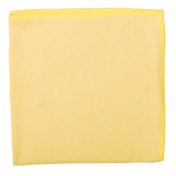We are now on part 5 of our flooring series and today we are dealing with carpets. Here, too, we will take a closer look at what exactly carpets are and what they are made of. We will also look at the different types and which rooms carpets are suitable for. We will then look at the advantages and disadvantages, as well as the correct cleaning and care. Finally, we recommend a cleaner from our range that is ideal for cleaning carpets.
What exactly is carpet?
In contrast to the floors discussed so far, carpet is a textile floor covering. Its history goes back to many centuries BC and its origins lie in the normal carpet, which was laid on the floor in a certain size. Since the 1950s, carpet has been further developed into carpet flooring. Nowadays, carpet is available in rolls, among other things.
The structure of carpets
Carpets consist of several layers. The top layer, also known as the pile layer, is made of yarn and is the "visible" layer . Underneath is the backing layer, which is made of either fleece, textile or foam . Fleece backings are manufactured in an environmentally friendly way and are very comfortable . Fleece also has no unpleasant smell. Textile backings, on the other hand, are very stable and durable . They can also be removed without leaving any residue. The foam backing, on the other hand, is elastic and does not contain any plasticizers.
What types are there?
There are many different types of carpets that differ in their production and also in their structure. One production method is tufting. Here, the yarn is sewn into the carpet backing from below. This creates loops and if they are cut open in the next step, velour is created. The other production method is weaving . Here, the yarn is placed in a loom and woven. After one of these steps, the yarn can be processed further to create other surfaces such as velour loop, velour, crimped velour, long pile or needle felt.
These yarns are used
Various materials can be used for the top layer. One is polypropylene . It is a synthetic material and the cheapest option . Unfortunately, it is not particularly robust and cannot bear any loads . It also has a rough appearance. Another option is polyamide . It is much more durable, long-lasting and resilient than polypropylene . It feels more pleasant, but polyamide is more expensive. Finally, there are also carpets made of natural fibers . Unfortunately, they are less durable and more expensive than synthetic fibers. But they are sustainable and of natural origin.
Which rooms are carpet suitable for?
Since carpets are available in different usage classes, they can be laid in almost any area. In private rooms, carpets are often found in bedrooms, children's rooms or even in the living room . Carpets are not uncommon in commercial spaces such as hotel rooms or office spaces . At first glance, carpets give the room elegance and a positive, feel-good atmosphere.
Advantages of Carpeting
Carpet is a versatile floor because almost every pattern and color is available. Carpet also dampens many sounds and can reduce noise by up to 35% . Like designer flooring and cork, carpet is also elastic and gives way when you walk on it. This is certainly gentle on the joints and spine. It is also hard-wearing, creates a pleasant room climate, contains hardly any pollutants and is non-slip . The fact that it is easy to lay and the reasonable price are also advantages of carpet.
Disadvantages of Carpeting
Unfortunately, alongside the many advantages, there are also some disadvantages. Dirt sticks better to carpets through the fibers, so the floor must be cleaned regularly. Ideally, it should be vacuumed every day to prevent dirt from penetrating deeper into the fibers . Removing stains is also difficult because, depending on the material the floor is made of, the fibers are sensitive. In addition , large amounts of water must not land on the carpet as this would damage the carpet and the adhesive. Finally, carpets are not an advantage if you have pets. Their claws can damage the floor and, for hygiene reasons alone, carpets are not an advantage here.
How to properly care for and clean carpets
To maintain the shine of the carpet, it should be vacuumed regularly, as, as already mentioned, the dirt otherwise penetrates deeper into the fibers and becomes embedded there. Ideally, it should be vacuumed every day, but at least once a week . A basic or intensive cleaning can also be carried out using the spray extraction method. Here, the top layer is treated with lukewarm water and a cleaner.
If a stain has appeared on the carpet, the cleaning effort is significantly higher. The stain must be treated immediately, but it is important not to rub it hard . This would only make the stain bigger. A damp cloth can help here by dabbing the stain from the outside to the inside. Suitable stain removers can also be a quick solution. Please follow the manufacturer's instructions for use.
Mundizio therefore recommends: Carpet and upholstery cleaner PRO7 from Clean and Clever
For optimal cleaning, we recommend the PRO7 carpet and upholstery cleaner from Clean and Clever . It is free of surfactants and can be used universally . It can be used on all colorfast and moisture-resistant surfaces made of natural and synthetic fibers. All water-soluble dirt can be removed in seconds. It is used without leaving any marks, does not contain any bleach and is free of fragrances and dyes.
All blog posts about the flooring series at a glance
- cork
- Carpet
- PVC
- Linoleum
- parquet
- laminate
- natural stone
- tiles



